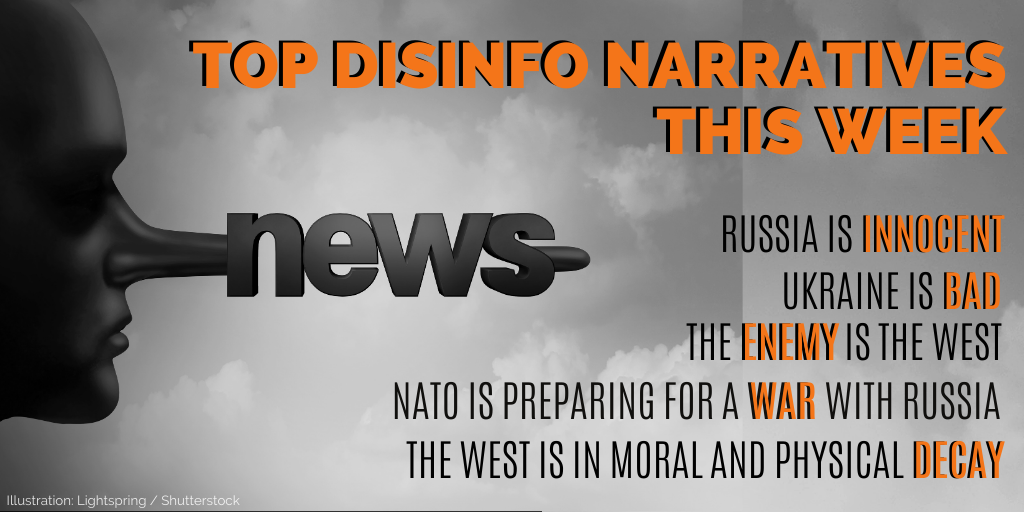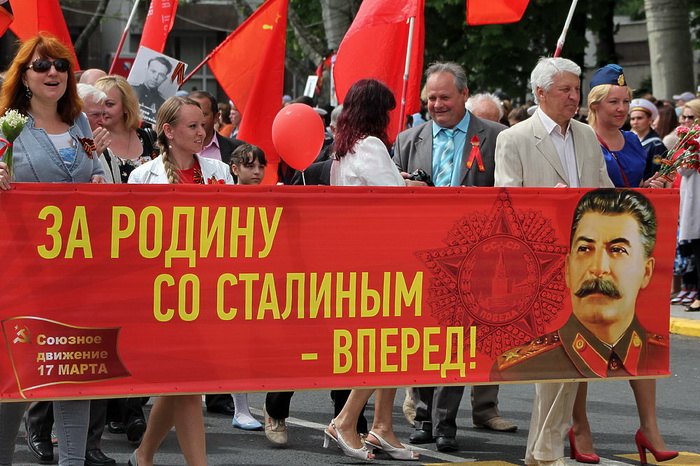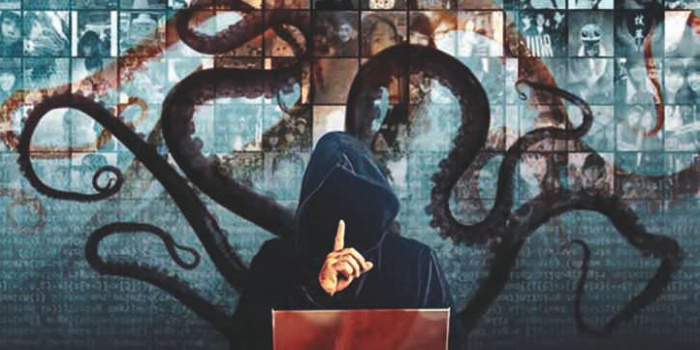These double standards also pertain to the media sphere. On the one hand, the government can’t ban content and media, since it will mean the end of the democracy which Ukraine is building. The slightest violation of freedom of speech immediately irritates human rights watchdogs, and, subsequently, Russian media raise a wave of outcry about the “fascist junta” in Ukraine. At the same time, many pro-Russian or directly Russian-employed bloggers, web-pages, writers, TV programs in Ukraine try to justify Russia’s annexation of Crimea and war in Donbas; criticize the Ukrainian government through false facts or manipulations to sow public anger and despondency; facilitate conflicts on language or identity grounds, or promote the Russian language and culture in Ukraine as allegedly “native” for Ukrainians.
How should the government react? The right policy under conditions of a hybrid war would be like that towards pornography – not to ban the content per se, but to limit ways of its distribution so that it can’t be openly advertised, massively broadcast, or found on the first web-page, Mykola Riabchuk, Ukrainian journalist and political analyst, claims in his essay for Harriman, the shortened version of which we publish below.
That is the policy Ukraine employs. It doesn’t ban the content itself. One may bring up to 10 copies of media products from Russia for personal use. At the same time, the government tries to limit the ways that pro-Russian extremist content promoting Russian aggression, occupation of Donbas or Crimea is distributed. Misunderstanding of this policy leads to such excesses in the western media like “Ukraine topped the list as the worst country to practice censorship” being far ahead of Kuwait, China, and Russia, according to a 2016 report of the Denmark-based international watchdog Freemuse. Also, the naive approach that Ukraine can fight Russian propaganda only by producing alternative content will not work, Mykola Riabchuk claims. Lies are disseminated much quicker than the truth. Lies about a boy allegedly crucified by “Ukrainian fascists” urged militants in Donbas to start fighting before any truth could reach them.
The reputable Denmark-based international watchdog Freemuse, which monitors the freedom of artistic expression around the globe, published its 2016 annual report under the title “Art under Threat.” One of the highlighted sentences in the report states, “Ukraine in 2016 topped the list as the worst country to practice censorship, with 557 registered acts of censorship.”
For the average global reader who barely knows where Ukraine is on the map, much less understands how its culture and media sphere function, the news might look quite scary. Especially if they happen to read elsewhere that Ukraine is run by a fascist junta that usurped power after a coup d’état and the removal of a “democratically elected president” and that, moreover, this junta has banned the Russian language; oppressed ethnic minorities; and killed, exiled, or completely silenced disobedient journalists.
Facts and figures make sense inasmuch as they help understand something—the broader picture, a context, or a trend. Yet, what can the figure “557 registered acts of censorship” tell us about the country other than the indisputable fact that its artistic environment is far more restrictive that anybody else’s in the world? The second country on the list is Kuwait with a modest 61 cases, and China comes next with 20. In contrast, Russia appears to be a true beacon of freedom—just 16 “registered acts of censorship,” even though it still loses to Iran (nine cases) and Saudi Arabia (a mere two).
So, what does “blacklist” mean in Ukraine and how does it differ—in scope and implementation—from what it means in Russia, China, or Saudi Arabia? In Ukraine, the blacklist targets selected Russian books, newspapers, and magazines, along with some films, television programs, and internet resources. What happens to the culprits who violate the ban? Are they simply fined,imprisoned, or shot? Does the ban only apply to the commercial distribution or to personal consumption as well? These questions are of no little importance if we are to understand the situation on the ground and not merely perform sheer numerical exercises.
In repressive countries, true censorship is supported by the secret police and prison sentences. In Ukraine, so far, all that the spillover from the notorious ban of the 544 Russian films has amounted to is a couple of official warnings to film distributors. It does not address consumers; the law restricts only the commercial import of blacklisted items (not only films, by the way, but also some books and music). Nowhere is there any restriction on their import for personal use. On the contrary, the law stipulates that anyone may bring up to 10 copies of any book, CD, or DVD from Russia as a personal belonging.
This makes the notion of censorship rather questionable, since the restrictive measures more resemble trade sanctions against an enemy state than a decisive attempt to curb forever the influx of the “subversive” items or to effectively ban a citizen’s access to any particular information. The same ambiguity can be observed in adjacent areas: even though the Ukrainian law bans a number of Russian media and excludes them from commercial distribution (in newsstands, cable networks, etc.), it does not ban their private consumption—either via satellite antennas or VPN services, which provide access to officially blocked media outlets and social networks.
The major irony of all these measures is that virtually any “subversive” idea or statement from the embargoed products can easily be found in domestic mass media, except perhaps direct calls for secession and undisguised support for separatists.
The Ukrainian authorities seem to be fully aware that restrictions cannot preclude the information flow in today’s world and, moreover, are not suitable for the democracy that Ukraine aspires to be. The government, therefore, adopted a two-pronged approach: complete lenience for consumers but increasingly tough restrictions on importers and distributors inasmuch as they try to profit from anti-Ukrainian products. The primary goal of the government measures seems to be not to completely block any access to “enemy propaganda,” which is actually impossible, but rather to make it complex, cumbersome, and requiring special, extraordinary effort. In a sense, it resembles the official treatment of pornography in many countries: it is not banned altogether but removed to sex shops and other specific sites, so as not to be visible and accessible by default in any show window.
The ambivalent policy, however, makes the government a convenient object of criticism from opposing quarters. On the one hand, human rights watchdogs criticize the government measures, with no caveats, even though Ukraine is in a de facto state of war with Russia. They raise maximalist demands—fully in line with the first amendment to the US Constitution—that are hardly suitable for the war-torn country. On the other hand, there are national radicals who chastise the government for not undertaking sufficient measures against the enemy’s propaganda—both imported and domestically produced.
The problem, then, boils down to a number of interrelated issues. First, it runs into the old, essentially philosophical, question about the limits of freedom in a liberal democracy and the complex dialectic of freedom and responsibility. It entails, secondly, the issue of a difficult trade-off between the demands for freedom and demands for security, which becomes particularly relevant during the war and evokes a broad range of historical precedents as well as today’s terrorism-related controversies.
The war that never was
The Russo-Ukrainian war that began in 2014 with the Russian military invasion of Crimea and eventually of Donbas is still taking its toll, amounting to 13,000 civilian deaths, 1.5 million refugees, huge economic losses, and vast material destruction. Thus, on the ground, in view of this devastation and the casualties, it may be of little importance whether we call it a “war” or a “conflict.” Definitions, however, have strong political implications.
Ukraine, like most post-Soviet states, had experienced Russia’s sharp power for years, but in 2014, the poorly disguised military aggression apparently turned this power from sharp to hard, prompting experts to employ the term “hybrid war,” meaning a peculiar combination of both military and nonmilitary tools was in use. The term appeared to be suitable for both those who insisted that there was a “war” and for those who preferred to speak about the “conflict” but who were ready to compromise on the term inasmuch as the adjective “hybrid” seemed to make the war less real.
Experts agree today that information warfare is a major part of the “special war” and that Ukraine presently is at the forefront of such a war—as “the proving ground where Russia tests the weapons and tactics of hybrid aggression which it then applies to the destabilization of the situation in the US and EU countries.”

A difficult trade-off
The unconventional character of the war poses additional challenges to both the Ukrainian government and civil society. They are squeezed between two very different and hardly compatible imperatives: on one hand, there is a need for security vis-à-vis a much stronger and extremely perfidious neighbor that looks determined either to subjugate Ukraine or destroy it. On the other, most Ukrainians hold freedom to be an indisputable value (as two recent revolutions have shown) and, at least normatively, support the Ukrainian government’s stated goal “to join Europe.” The difficult trade-off between the two demands is further complicated by the legal ambiguity of the “hybrid war” that does exist de facto but not de jure.
The difficult trade-off between the two demands is further complicated by the legal ambiguity of the “hybrid war” that does exist de facto but not de jure.
Ukrainians counter that the Russian media systemically spread toxic lies and warmongering, that most people with press cards from the Russian side are journalists only in name, and that their activity is much more indicative of special operations than journalism.
The Ukrainian arguments make sense only if we recognize that there is war, that the enemy is a rogue state with enormous resources and no moral constraints, so that the very existence of the Ukrainian nation is at stake, and that information warfare is a major component of Russia’s ongoing hybrid offense. There is no appetite in the West to acknowledge the conflict as war rather than the euphemistic “crisis,” or to properly grasp it as part of a broader, systemic, and coordinated assault of a rogue regime on the entire liberal democratic world. Nonetheless, the Kremlin’s reckless behavior brings back to reality even the most pacifist Westerners seduced prematurely by the sweet notion of the end of history.
The distinctive feature of the new type of Russian propaganda is its cynical and barefaced neglect of facts, evidence, and plausibility. It creates a completely new situation of “post-truth,” when “Nothing Is True and Everything Is Possible,” to quote Peter Pomerantsev’s book title.
This poses a real challenge to both democratic governments and liberal intellectuals committed to freedom of speech as one of the fundamental principles of their life and professional activity. The traditional Western belief that words should be fought with words is strongly questioned and seriously undermined. The proven meddling of Putin’s regime in democratic elections and other procedures that distorts voting results and undermines the credibility of the process is only part of the story. Worse is a popular cynicism, evoked by the interference and fostered by “post-truth” propaganda. But perhaps the greatest danger is the inflammatory propaganda aimed to provoke an immediate subversive, often violent, reaction on the part of the recipients, as happened in Berlin with the “Lisa story,” or in Sloviansk with the fake news about the “crucified boy,” or throughout southeastern Ukraine with the calumnious narrative spread internationally about the “fascist junta” in Kyiv that allegedly persecutes Russians and Russophones.
It may sound like a nice idea—to fight words with words. But the problem is that lies move quickly and the truth moves slowly; lies appeal to emotions, and the truth appeals to reason; the lie provokes immediate action, and the truth evokes pondering and weighed judgement. Hundreds of Germans went on the streets after the “Lisa” fake, and thousands of volunteers took up arms in Donbas and elsewhere and rushed to fight the “junta” before any truth about the “crucified boy” or “Odesa massacre” reached them.
The recipe that experts suggest for countering information warfare looks reasonable but hardly sufficient. They advise, in good faith, “to present rational arguments supported by real evidence to overturn myths and beliefs that are introduced by destructive powers in order to create panic and manipulate populations.”
But, as Keir Giles aptly remarks, “by applying Western notions of the nature and importance of truth, this approach measures these campaigns by entirely the wrong criteria, and fundamentally misunderstands their objectives.” Their primary goal is not to promote any kind of “truth,” but rather “to deepen partisan divisions, foster racial and religious animosities and discredit the mainstream media by planting disinformation.”
One more factor is important in the case of Ukraine; namely, the dual, split, and fluid identity of many citizens, which makes it vulnerable vis-à-vis a toxic enemy’s propaganda, especially if the enemy manages to skillfully weaponize the identity fractures and play them in multiple fields—history, culture, language, or religion. In this context, restrictions on the commercial distribution of some cultural and media products from the “aggressor state” and some sanctions on its most zealous propagandists seem reasonable and justifiable — insofar as they target only the specific state (Russia) and the specific time span (period of war). Civil society and international watchdogs need not be concerned about these measures, but rather they should focus on the limits that should not be overstepped or unduly extended. They should also be concerned about the proper procedure in the application of these restrictions and their temporary and exceptional character, so as to prevent their gradual routinization and normalization—both in people’s minds and institutional practices.

The harsh and often incompetent criticism of the government-targeted sanctions looks to be unproductive—not only because it would have no impact on government policy, inasmuch as security concerns usually prevail over others during war; but also because such criticism undermines the position of critics (and of civil society in general) when they pressure the government in regard to issues that are not directly related to the national security and that can and should be unequivocally resolved. I have in mind first and foremost government leniency vis-à-vis far-right vigilantes who attack, often violently, racial minorities and LGBT groups, intimidate opponents, and disrupt public events, which they consider ideologically inappropriate. This is the field where the coordinated efforts of Ukrainian civil society and the international community are really much needed and where they can be accepted by the majority of Ukrainians as reasonable and legitimate.
Many more problems remain to be resolved, including the uncontested control of oligarchs over the mainstream media, the highly flawed court system, and the disheartening fecklessness of law enforcement agencies. But as long as the public space in the country remains open, the political process competitive, and media basically free and fairly pluralistic, the measured restrictions on the commercial distribution of certain Russian propaganda products for the period of the de facto war can probably be justified, given the condition that they are strictly regulated by law, monitored by civil society, and questioned by watchdogs—with the clearly recognized goal to prevent any excesses, arbitrariness, and expansion beyond the defined limits.
 Mykola Riabchuk, one of the founders of the journal Krytyka, is a journalist, political analyst, and literary critic. He recently stepped down as president of PEN Ukraine. An earlier version of this essay was presented at the 24th World Convention of the Association for the Study of Nationalities, on May 4, 2019, at Columbia University.
Mykola Riabchuk, one of the founders of the journal Krytyka, is a journalist, political analyst, and literary critic. He recently stepped down as president of PEN Ukraine. An earlier version of this essay was presented at the 24th World Convention of the Association for the Study of Nationalities, on May 4, 2019, at Columbia University.Read also:
- Curve of Russian propaganda on coronavirus goes up, narratives recur and multiply
- While nobody is watching, COVID-19 may allow Russia to crush Ukraine
- What’s wrong with Ukraine banning two propaganda channels?
- What if? Hybrid War and consequences for Europe (part 1)
- The Surkov Leaks: Major report on Russia’s hybrid war in Ukraine published at RUSI Institute
- A guide to Russian propaganda. Part 5: Reflexive Control
- Ex KGB agent who repressed Ukrainian intellectuals among country’s most influential persons. How come?
- “Russia is not ready to let Ukraine go” – Sentsov’s first public speech after Russian prison
- Putin using Western values to destroy the West, Moscow analyst says








